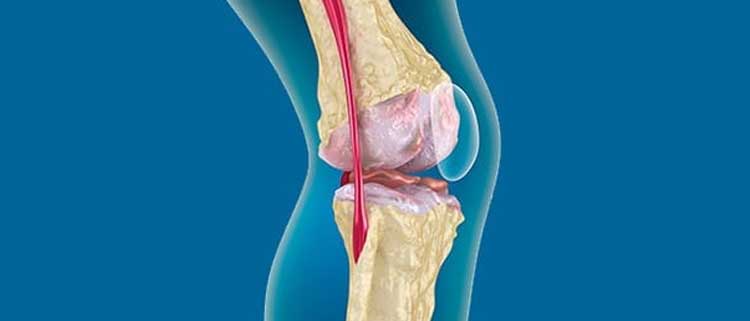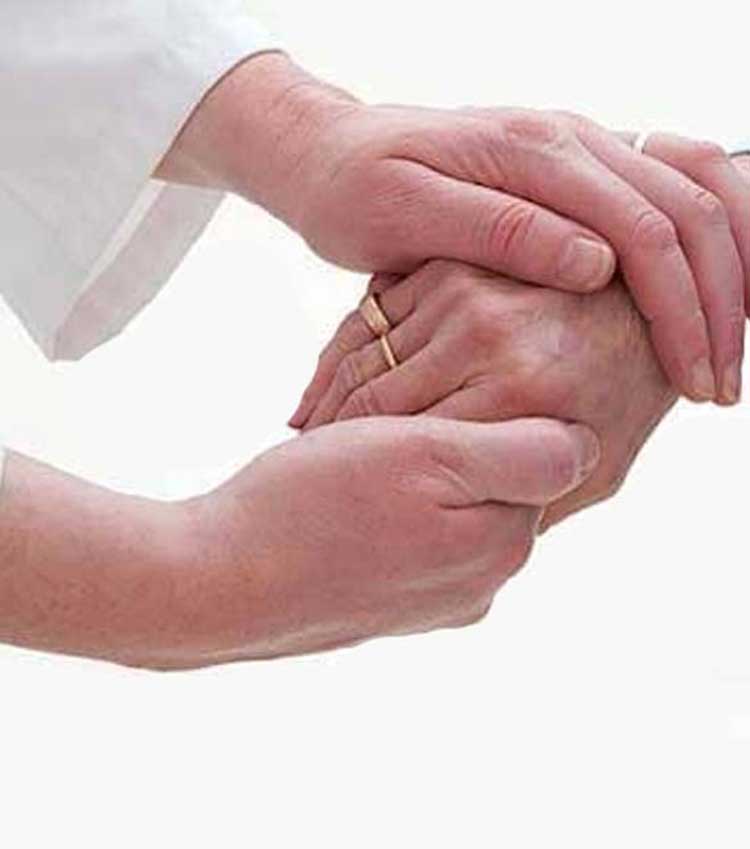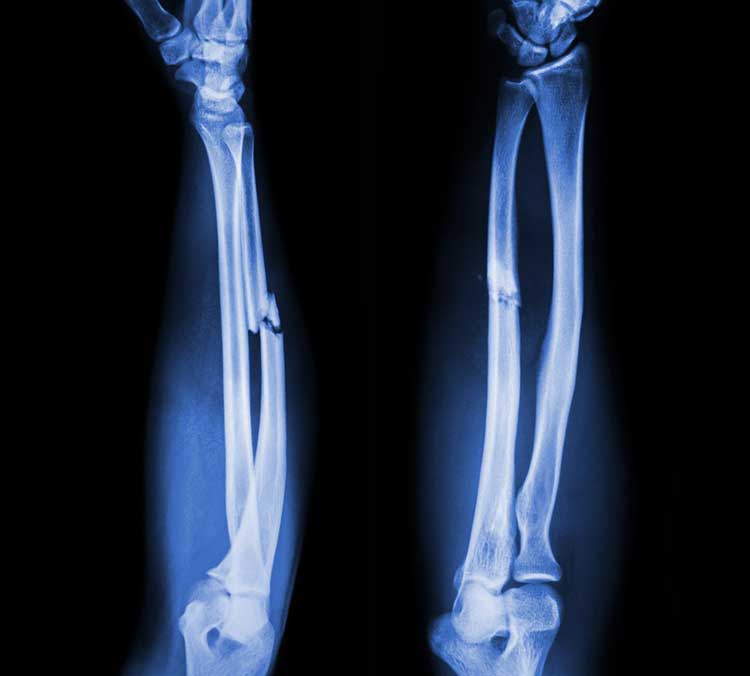
Get relief from discomfort at Orange County Orthopedic Center.
There are many orthopedic injuries that can occur anywhere on the body or even affect your entire body all at once. At Orange County Orthopedics, we work hard to treat these conditions quickly and effectively to help you find relief.
- Our process involves thorough diagnosis and evaluation
- We use minimally invasive treatments whenever possible
Osteoporosis – This condition is bone loss, and it causes bones to become brittle and weak, leading to fractures. Osteoporosis affects both men and women, and there are many factors that can increase risk, such as not enough calcium. There are no symptoms of early bone loss. However, later symptoms include stooped posture, loss of height, back pain, and a fracture that occurs more easily than expected. Steps can be taken to slow bone loss, such as taking different types of medications and supplements and exercising.
Bone and soft tissue tumors – These tumors can develop from nerves, fat, muscles, blood vessels, and more. There are about 50 different types of bone and soft tissue tumors, both benign and malignant. Bone and soft tissue tumors may be surgically removed or treated with therapies like chemotherapy and radiation
Muscular dystrophy – This condition is actually made up of a group of diseases that lead to a loss of muscle mass. There are varying types of muscular dystrophy – some surface in adulthood, while others show up in early childhood. Although the symptoms depend on the type that is experienced, some of the most common ones include frequent falls, trouble running, muscle pain and stiffness, and the eventual loss of the ability to walk. While there is no cure for muscular dystrophy, medications (such as corticosteroids), exercise, physical therapy, braces, and mobility aids can all help to manage symptoms.


Repetitive stress injuries – Repetitive stress injuries include a range of specific conditions, such as tendonitis, carpal tunnel syndrome, and bursitis. Patients who work a lot at the computer and construction workers are two types more at risk for developing repetitive stress injuries. Numbness, stiffness, pain, tingling, and weakness are symptoms. Elevation, icing, splints, rest, and medications are used as treatment methods. In some cases, surgery may be used to repair the area.
Nerve compression syndromes. – This condition is caused by pressure on a single nerve, and it can affect many areas of the body. Pain, tingling, muscle weakness, and numbness are symptoms. Treating the underlying cause is the best approach (such as weight loss if weight gain is causing too much pressure). Surgery may be used to relieve pressure on the nerve.
Arthritis – Arthritis is characterized by inflammation of the joints. There are varying forms of arthritis, such as rheumatoid arthritis and osteoarthritis. The cause can be inflammatory issues or normal wear and tear on cartilage. Symptoms typically involve pain and stiffness. Anti-inflammatory medications and prescriptions can be used to manage arthritis, as well as exercise, physical therapy, and sometimes surgery to remove damaged joint lining, realign the joints, or replace the joint altogether.
Malunion/nonunion – When the bones involved in a fracture have not lined up properly during the healing process, the result is malunion. Nonunion occurs when the ends of the bone fail to heal at all. Malunion and nonunion are caused by lack of stability or blood flow in the area while healing. Other contributing factors include trauma to the area, diabetes, infection, and smoking. Common areas affected by malunion and nonunion are the pelvis, hip, and elbow. These conditions are discovered with an x-ray, and symptoms include tenderness, pain, swelling, and deformity. Treatment for malunion and nonunion involves surgically cutting the bone at or near the fracture site, and then using pins, rods, or plates to fixate the bone in place.

